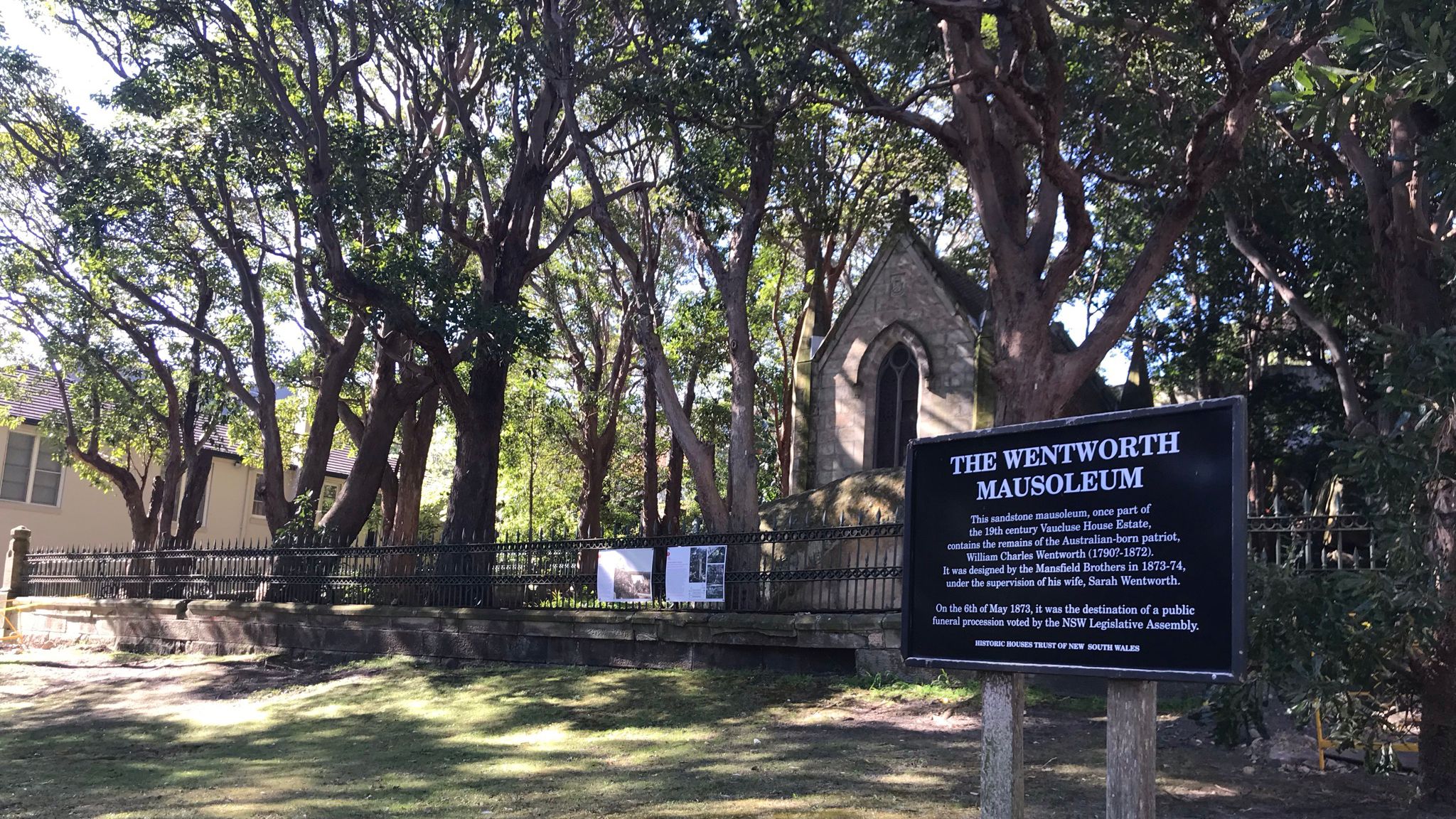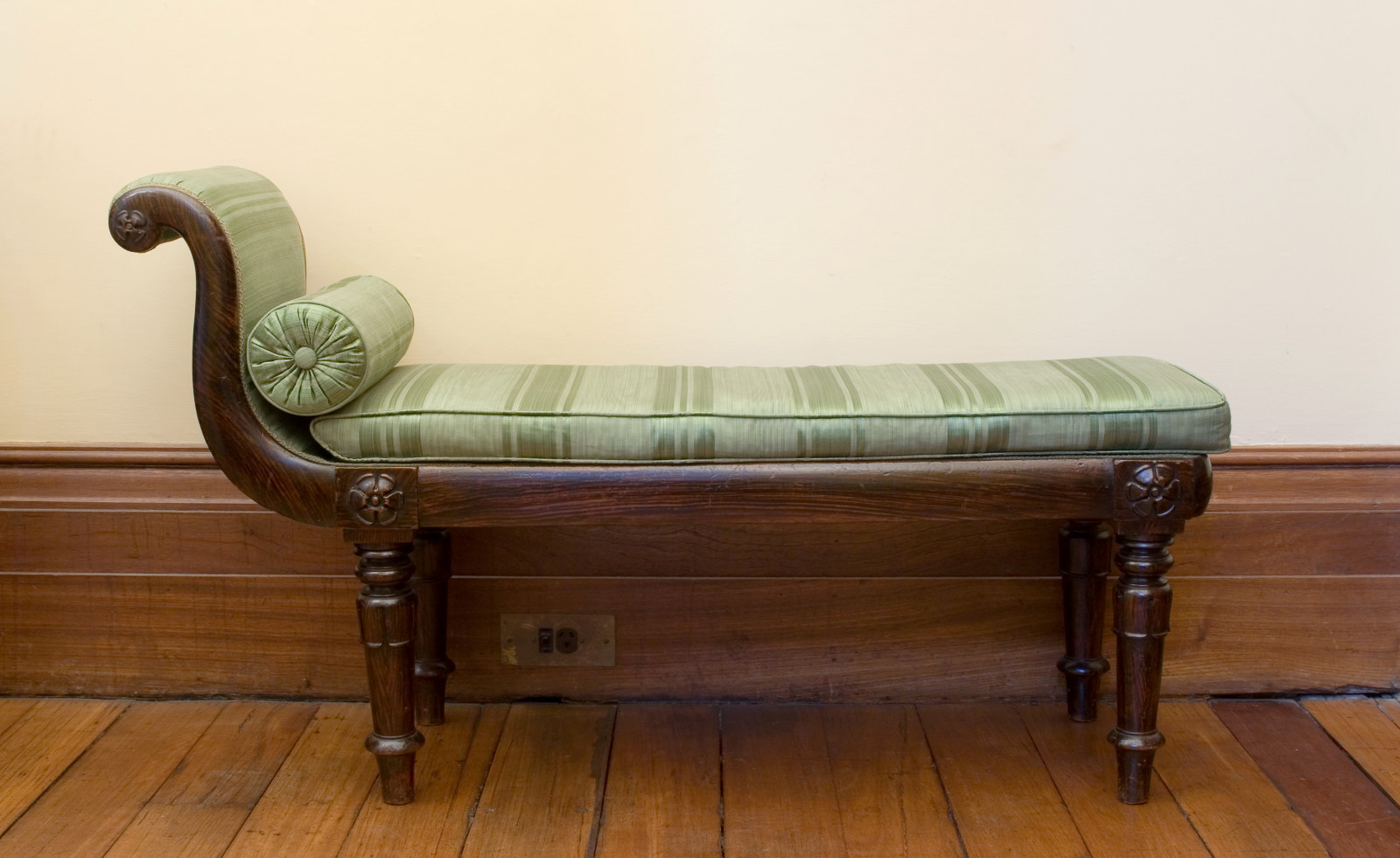Who's that girl?
Gazing across the drawing room at Vaucluse House, and in countless 19th century interiors around the world, is this bust of a young woman emerging from a flower or a circle of leaves.
Though we know her today mainly from these marble-like Parian ware copies, the original on which they are based is far older.
But just who is she? And how did she become such an iconic ‘face’?
Charles Townley
Antiquarian Charles Townley (1737–1805) purchased the original bust known as ‘Clytie’ in Naples in 1772 and it became the prized centrepiece of his extensive collection of antiquities. The bust forms the focal point of Johann Zoffany’s famous capriccio Charles Towneley in his library (1781-3).
One often-repeated story about the bust is that it was rescued by Townley when fleeing his London house during the anti-Catholic Gordon riots of 1780. Townley supposedly ran back from his carriage into his house exclaiming “I cannot leave my wife”, only to reemerge struggling under Clytie’s considerable weight. The story is unfortunately apocryphal, since the solid marble bust is far too heavy for one person ever to lift.
Townley opened his impressive collection to the public (both interested gentry and artists), and the popular attraction did much to enhance the Neoclassical taste in England. Oddly however, Townley never published scholarly catalogues of his collection - unlike his contemporary Sir William Hamilton, who did catalogue his famous collection of Greek vases.
Townley named the bust ‘Clytie’ after a nymph in Roman mythology who fell in love with the sun god Apollo and was turned into a ‘sunflower’ – not Helianthus annuus, which was a north American flower unknown to the Romans – which then turned its head to follow his course through the sky each day. While this romantic name remains, the actual subject of the work is unknown:
“It has been called a Grecian lady, and also Isis resting upon the flower of the Nymphaea lotus; Mr Townley called it Clytie rising from the sunflower: and D’Hancarville surmised in the mystic manner of some of the antiquaries of the day [a description which included Townley] that it was sepulchral, designating both the individual represented and her apotheosis.” 1.
Some scholars believe that the bust represents Agrippina the elder (d.33 CE, granddaughter of both Augustus and Marcus Agrippa, wife of Germanicus, mother of Caligula and grandmother of Nero) or possibly Antonia the younger (d.38 CE, mother of the emperor Claudius). Others argue the work is actually an 18th century ‘fake’.
In 1805, following Townley’s death, the bust along with the wider collection was purchased by the British Museum. Not having been located in the great collections of Rome or Florence, however, it never attracted much Continental attention and the bust was best known in Britain and her colonies.
Reproducing Clytie
Clytie was soon reproduced widely in marble, plaster, and, ultimately and most iconically, in Parian ware. This was a slip cast ceramic that mimiced the texture and colour of classical Greek statuary marble from the island of Paros (made famous by the Greek sculptor Praxiteles). First used at Copeland & Garrett in 1843, it was displayed by twenty manufacturers in the Great Exhibition of 1851 (most notably by Copeland/Spode, Welbeek, Goss and Minton – who coined the term ‘Parian porcelain’).
Parian ware was used widely for ornaments – including vases, urns and garnitures – and could also be coloured with enamels, dyes or coloured slips and gilding. Its invention coincided with the 1844 invention of a ‘reducing machine’ by Benjamin Chevert, which enabled quick and highly accurate sculptural copies to be made at any scale. Contemporary sculptors benefitted greatly from this, with their works being reproduced for widespread sale: American sculptor Hiram Power’s ‘Greek Slave’ (1844) is perhaps the most well known of these. Powers sculpted his own version of Clytie in 1873, the year he died, and the numerous examples of ‘Proserpine’ (the Greek Persephone, who spent six months of every year in the underworld) produced in his studio were also based on the Townley original, though incorporating a base of acanthus leaves rather than petals.
Using a reduced copy of ‘Clytie’ by the French sculptor Pierre Charles-Eugene Delpech as a model, the bust was first cast in Parian ware by the English ceramics company Copeland in 1855 for use as a prize in a lottery held by the Art Union of London. It was soon available for general sale as well; our example is stamped 'Copeland /1863'. Other firms quickly produced their own versions. Clytie’s expression and hair also appealed to the emerging Aesthetic taste, ensuring her production long after other classical works – notably the Apollo Belvedere - had diminished in popularity.
Parian ware at Vaucluse House
Clytie is one of several examples of Parian ware that can be seen at Vaucluse House. These include: busts of the Apollo Belvedere, Prince Albert and Sir Walter Scott; a statuette after William Calder Marshall’s ‘Dancing girl reposing’; and a pair of mantle vases. These items reflect both mid-century colonial Victorian taste and the acquisition by the Wentworths of objects that they saw displayed at both the Great Exhibition and on their wider European travels.
Notes
- The British Museum: The Townley Gallery vol.II. London, Charles Knight & Co.,1836. pp19-20.
Published on
Vaucluse House
Browse all
The coolest room in the house
What practical techniques can we learn from historical building design to minimise heat and energy consumption in our homes today?

Conservation
Vaucluse House kitchen garden
The Vaucluse House kitchen garden recently underwent a significant rejuvenation project to preserve the site and allow it to continue to be used as a valuable educational resource

Wentworth Mausoleum perimeter fence conservation
MHNSW is undertaking the first comprehensive conservation works to the fence surrounding the 1870s resting place of William Charles Wentworth

Designed with intent: colonial vs modernist chairs
This selection of furniture juxtaposes the old with the new: early 19th-century colonial seating and modernist styles made over a hundred years later
